To Kill a Mockingbird Character Rant
Developed by Jamie Lansdale
Dixie High School
English
Grade Level: 11-12
Introduction
It is sometimes difficult to prompt students to participate in their own learning. By junior/senior year in high school, young people often feel sophisticated enough to take a blasé attitude about assignments. Jamie Lansdale, English teacher at Dixie High School found a way to inspire her classes to become invested in the characters they read about in her classes. Inspired by her experiences during Muse Machine’s 2019 Advanced Teacher Training Seminar (ATTS), Jamie designed a lesson for her junior level classes that is centered around the characters of a familiar piece of American literature. Having seen the play during ATTS, Jamie was moved to re-examine the ways that her instructional process could be enhanced using the instructional device called the “rant.” Also, during ATTS teachers heard from two very enthused cabaret actors who helped them understand how to get audiences more invested in the performance. All of these factors come together in Jamie’s lesson entitled, To Kill A Mockingbird Rant.
Click here to view/download this lesson plan as a PDFInspiration
“Cabaret is Me” and To Kill a Mockingbird were performances presented for the participants during the Muse Machine’s Advanced Teacher Training Seminar in 2019 in New York City.

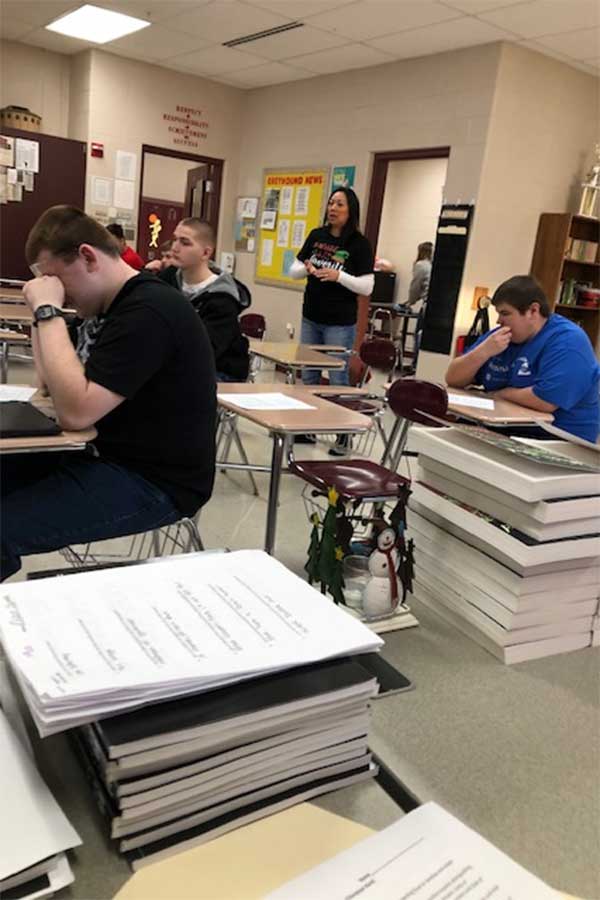
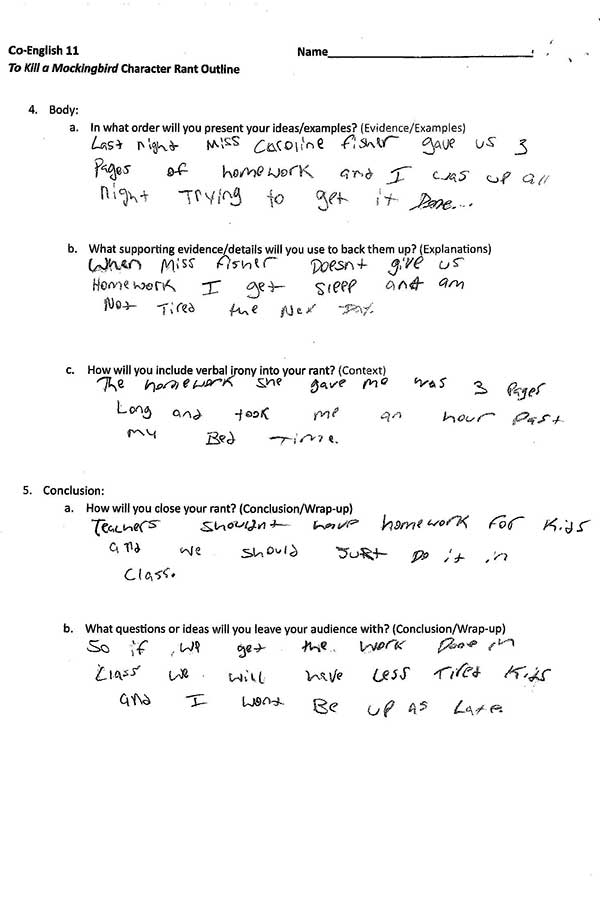
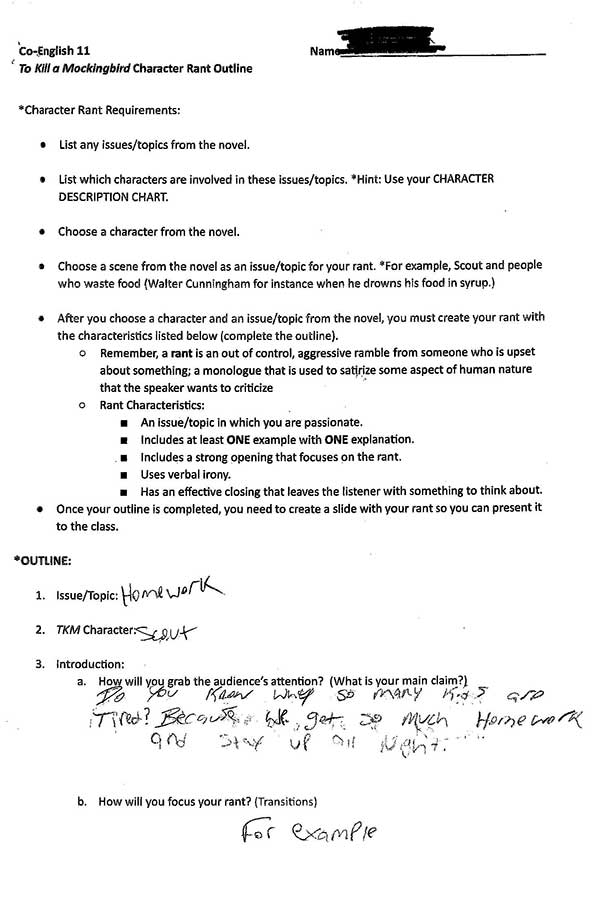
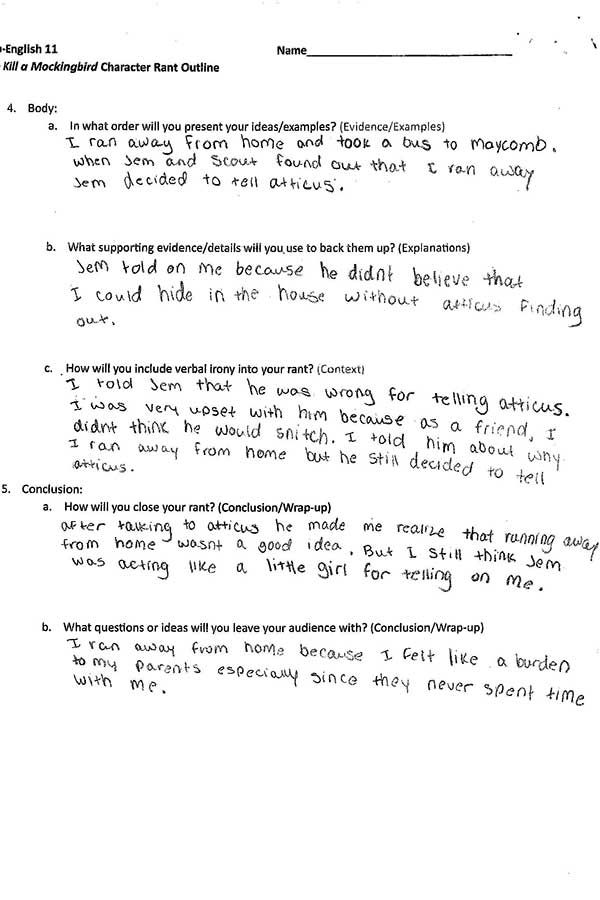
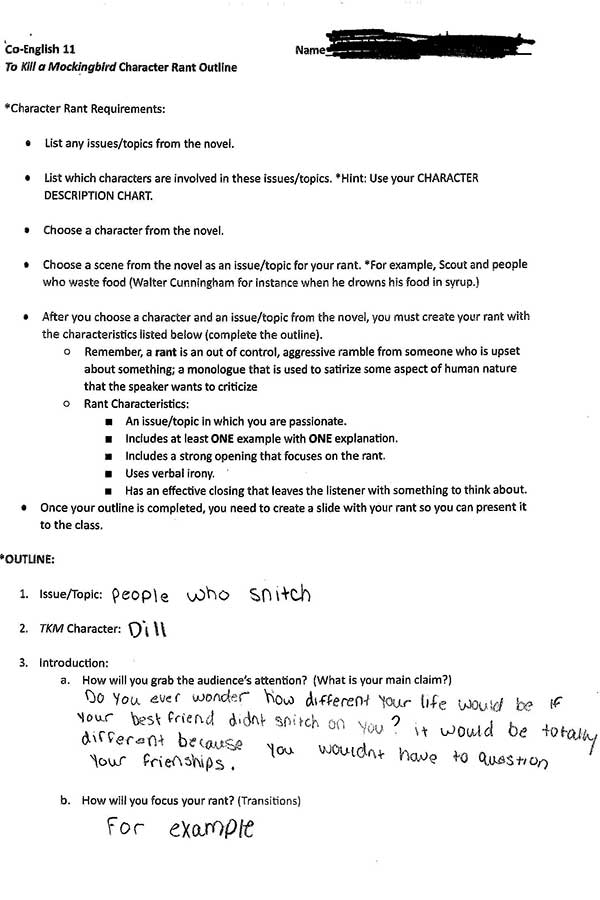
Overview
Summary
After reading the novel To Kill a Mockingbird, students will choose a character from the novel and present a “rant” to the class. This “rant” will focus on any part of the plot throughout the novel. For example, one student might choose to present Scout ranting about Walter Cunningham and his overindulgence of the syrup at dinner.
Standards
RL.11-12.2 Analyze literary text development.
RL.11-12.3 Analyze the impact of the author’s choices regarding how to develop and relate elements of a story or drama (e.g., where a story is set, how the action is ordered, how the characters are introduced and developed).
RL.11-12.6 Analyze a case in which grasping point of view or perspective requires distinguishing what is directly stated in a text from what is really meant (e.g., satire, sarcasm, irony, or understatement) and evaluate the impact of these literary devices on the content and style of the text.
W.11-12.4 Produce clear and coherent writing in which the development, organization, and style are appropriate to task, purpose, and audience.
W.11-12.5 Develop and strengthen writing as needed by planning, revising, editing, rewriting, or trying a new approach, focusing on addressing what is most significant for a specific purpose and audience.
SL.11-12.1 Initiate and participate effectively in a range of collaborative discussions (one-on- one, in groups, and teacher-led) with diverse partners on grades 11–12 topics, texts, and issues, building on others’ ideas and expressing their own clearly and persuasively.
SL.11-12.4 Present information, findings, and supporting evidence, conveying a clear and distinct perspective, such that listeners can follow the line of reasoning, alternative or opposing perspectives are addressed, and the organization, development, substance, and style are appropriate to purpose, audience, and a range of formal and informal tasks.
SL.11-12.6 Adapt speech to a variety of contexts and tasks, demonstrating a command of formal English when indicated or appropriate.
Objectives/Outcomes
After students create their character rant, they will be present them to the class. There will be grading rubrics for the creation process, as well as the presentation itself.
Teaching Approach
Lecture, small groups, whole group presentation
Assessment
There will be grading rubrics for the character rant and presentation for each student.
Lesson Preparation
Teacher Needs
Character Description Chart Handout
Character Rant Key Terms presentation
- Example rant videos (linked within the Character Rant Key Terms slideshow)
Teacher Information
To Kill a Mockingbird novel, guided questions, and character description chart should be completed prior to this lesson. This entire lesson delivery and presentation should take an estimated time of 1-4 days (depending on class size and time given to students to work on the assignment in class).
Helpful Hints
If students have the character description chart completed ahead of time, it will help in the brainstorming process of the character rant. A good overview of how to write a rant can be found at:
Student Needs
Pet Peeves Brainstorm Worksheet
Character Rant fill-in the blank guided notes
Character Rant template (fillable Google Slides)
Prior Knowledge
Students will have already read the novel To Kill a Mockingbird, answered the study guides and completed the Character Description Chart prior to starting the character rant. (If students have completed the character descriptions ahead of time, they can then use that chart to help them choose a character and a particular scene from the novel to create their rant.)
Student Voice
Students will be able to choose their partner for the brainstorming activity/practice prior to the actual presentation. Students will also be able to choose which character he/she will portray for the presentation.
Vocabulary
cabaret, rant, monologue, satire, point of view, and verbal irony
Evidence/Assessment of Outcomes
Students will produce written outlines and present their character rants in front of the entire class.
Enduring Understandings
After this lesson, students will be able to take away skills they can use to improve their speaking and listening (personal expression, storytelling, and emotion) skills, as well as how to interpret and analyze tone and point of view. These ideas and topics stem from some of the main themes of the novel (prejudice and racism, appearances vs. reality, and courage/bravery).
Learning Plan
Prompt
Referring to the Key Terms slideshow, students will take notes over a brief introduction and review of the definitions of key vocabulary: cabaret, a rant, monologues, satire, point of view and verbal irony. Students will watch videos with examples of rants.
Hooks
After students watch the example videos and take notes, they will brainstorm pet peeves (see Pet Peeves Brainstorm worksheet) and take turns sharing this initial “rant” with a partner.
Essential Questions
- Why is how we say something as important as what we say?
- How does the use of irony or satire impact the persuasiveness of an argument?
- Why might you choose to use figurative language to express a point of view?
Resources
- As described under Teacher Needs and Student Needs
- To Kill a Mockingbird novel
- To Kill a Mockingbird guided questions answered in previous sessions
Teacher and Student Performance Tasks
- Introduce the Character Rant Outline handout.
- Independently, students will outline and write a new rant from the point of view of a character in To Kill a Mockingbird.
- Students will develop a presentation in Google Slides and deliver a compelling performance of their character’s rant in front of the class.
Final Review
After the lesson is completed, students will be able to explain and give examples of the following terms: cabaret, rant, monologues, satire, point of view, and verbal irony. Students will have to present evidence of knowledge of these terms in their presentation/slide show.
Lesson Reflection
After teaching this lesson, I thought it went better than expected. I tried this lesson with my co-taught English 11 class. I incorporated our department writing curriculum for this lesson, so it seemed to be familiar to the students when they were creating their character rants.
Overall, I was happy with the outcome and process of the character rants. Most of the class was quite creative with their topics and ideas. The only part I would consider changing or trying differently is the presentation aspect. I would try this same lesson with a higher-level class of students to see if I could get longer and more analytical character rants. I think that relatively weaker writing abilities may have contributed to why this class’s rants were short.





